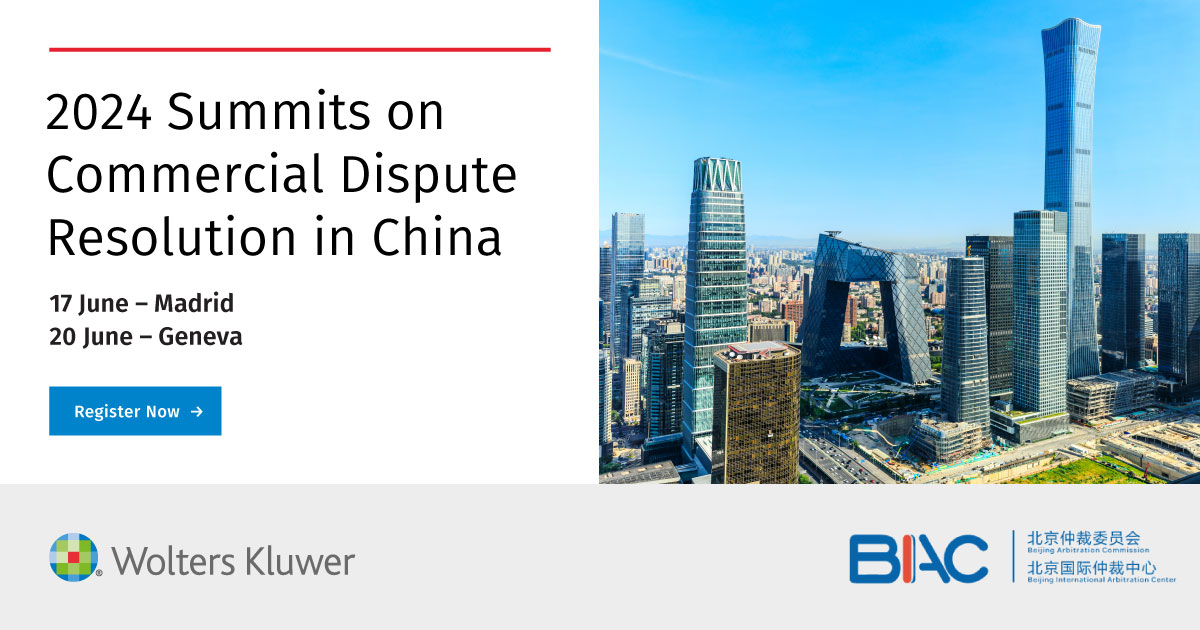On 1 May 2009, the new “Online” Arbitration Rules (the “Online Rules”) of the China International Economic and Trade Arbitration Commission (“CIETAC”) came into effect. At this stage, it appears that the Online Rules are only available in Chinese.
The Online Rules are aimed primarily at e-commerce disputes, although parties are free to agree to use them for other types of disputes (Article 1).
CIETAC has delegated the administration of arbitrations under the Online Rules to its Online Dispute Resolution Centre, an organization under CIETAC specializing in resolving internet domain name disputes and e-commerce disputes etc. using online dispute resolution methods.
In general, the Online Rules are an abbreviated version of the “main” CIETAC Arbitration Rules (the “Main Rules”), and many of its provisions are modeled closely on the Main Rules, e.g. regarding the constitution of the tribunal. Article 54 of the Online Rules also provides that the Main Rules will govern matters not covered in the Online Rules (such as challenges to the arbitrators’ appointment).
Notable features of the Online Rules include the following:
· The Online Rules (at Article 11(2)) expressly provide that a party (and its lawyers) must not unilaterally communicate with the tribunal members, and that all communications between the parties and the tribunal must go through the Secretariat. By comparison, the Main Rules are silent on this issue.
· There are elaborate provisions (in Chapter 2) regarding the electronic submission and transmission of documents, including the parties’ memorials and evidence, and notices from the CIETAC Secretariat (the “Secretariat”). Indeed, the default modes of submission/transmission to be used by the parties and the Secretariat are email, Electronic Data Interchange, facsimile etc (although other traditional modes such as the post and courier may be used depending on the circumstances of the case). There are also provisions for deemed dates and times of receipt of electronically transmitted documents.
· In relation to electronically produced, transmitted and stored evidence, Article 29 sets out various factors to be considered by the tribunal in deciding the evidence’s reliability. Factors include the reliability of the methods in producing, storing, and authenticating the evidence, as well as in maintaining its integrity. Article 29 also expressly states that a piece of electronic evidence using a reliable electronic signature has the same force and probative value as a document bearing a manuscript signature or company chop.
· Article 15 provides that CIETAC will use its reasonable endeavours to keep data communications secure and encrypted.
· Article 31 gives a power to the tribunal, where necessary, to investigate and collect relevant evidence from electronic services suppliers, logistics companies and payment banks etc. The tribunal can request the parties, and the parties have a duty, to provide assistance for and cooperate with such investigations. Any evidence collected will be provided to the parties to give them an opportunity to comment.
· Unless the parties agree otherwise, the tribunal will normally decide the dispute on the papers only (i.e. without any oral hearing) (Article 32). Where an oral hearing is necessary, the default mode of hearing is by video conference or other electronic means of communication (although traditional in-person meetings can also be used depending on the circumstances of the case) (Article 33). Witness evidence can also be given by video conference (Article 36).
· There is also provision in Article 37 for online mediation of the dispute(s) in question (by video conference or other electronic means of communication, or by in-person meetings where appropriate).
· The Online Rules actually provide for three different procedures – the “main” online procedure, a “summary” procedure (mainly for disputes with a value of more than RMB 100,000 but less than RMB 1,000,000) and an “expedited” procedure (mainly for disputes with a value of RMB 100,000 or less).
· The main difference between the above three procedures is the timeframes involved. For example, in the main online procedure, the Respondent has 30 days from receipt of the notice of arbitration to submit its Defence (and Counterclaim, if any), the Claimant has 20 days after that to submit its Reply, and the tribunal should make its award within 4 months of its constitution. Under the summary procedure, the timeframes are 15 days, 10 days and 2 months respectively. Under the expedited procedure, the timeframes are 10 days, 5 days and 15 days respectively. Other aspects of the rules are the same for all three procedures.
· When submitting its request for arbitration, the Claimant has to pay the arbitration fee in advance. Appendix 2 sets out two scales of fees, one for domestic cases, the other for foreign-related cases. Fees are calculated by reference to the amount claimed by the Claimant (or, where this is inconsistent with the amount in dispute, the amount in dispute). For all cases, the fees start from a minimum of RMB4,000. The top band of the fees for domestic and foreign-related cases are, respectively, RMB606,500 plus 0.4% of the amount in dispute above RMB100,000, and RMB864,000 plus 0.4% of the amount in dispute above RMB100,000. There is an additional RMB10,000 initiation fee for foreign-related cases.
· The Online Rules also provide (in Appendix 1) a model online arbitration clause (in Chinese).
By Kim Rooney and Dave Lau
________________________
To make sure you do not miss out on regular updates from the Kluwer Arbitration Blog, please subscribe here. To submit a proposal for a blog post, please consult our Editorial Guidelines.


